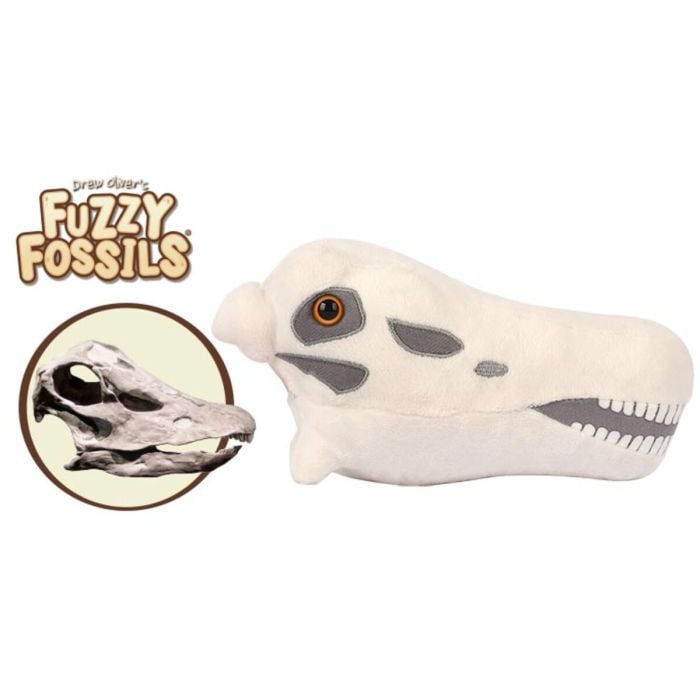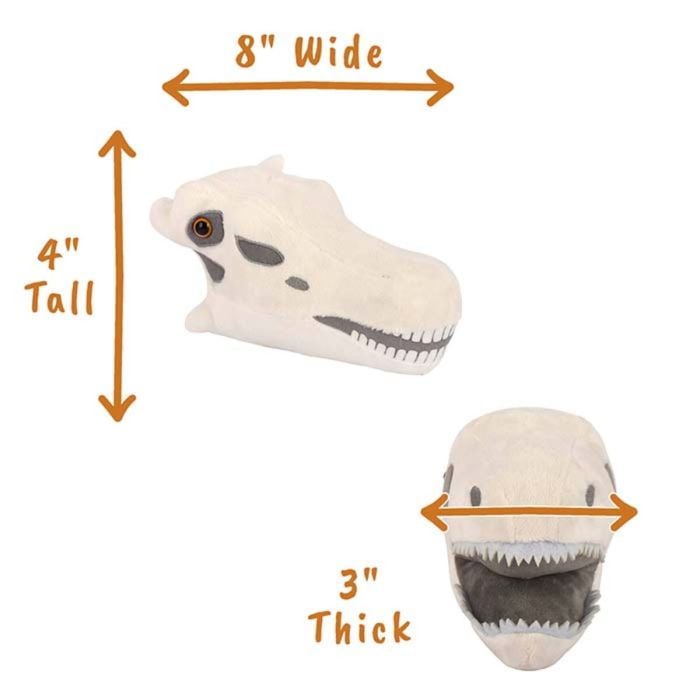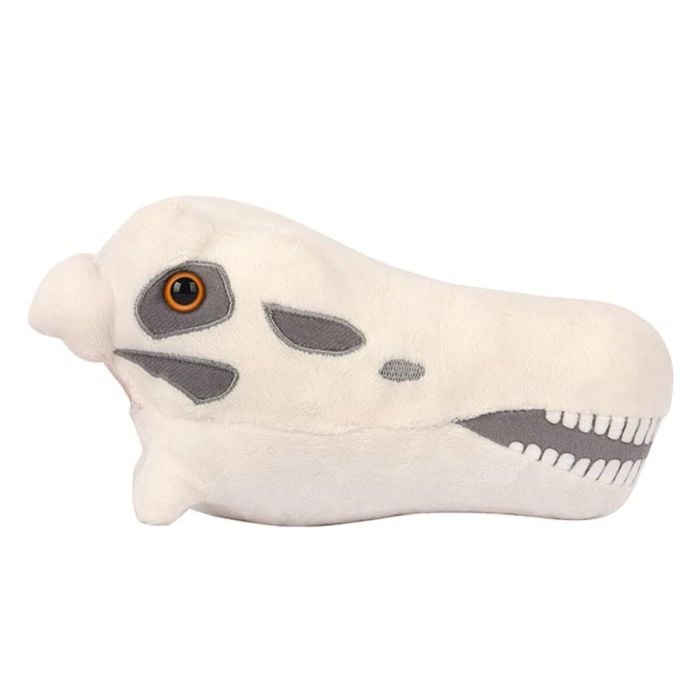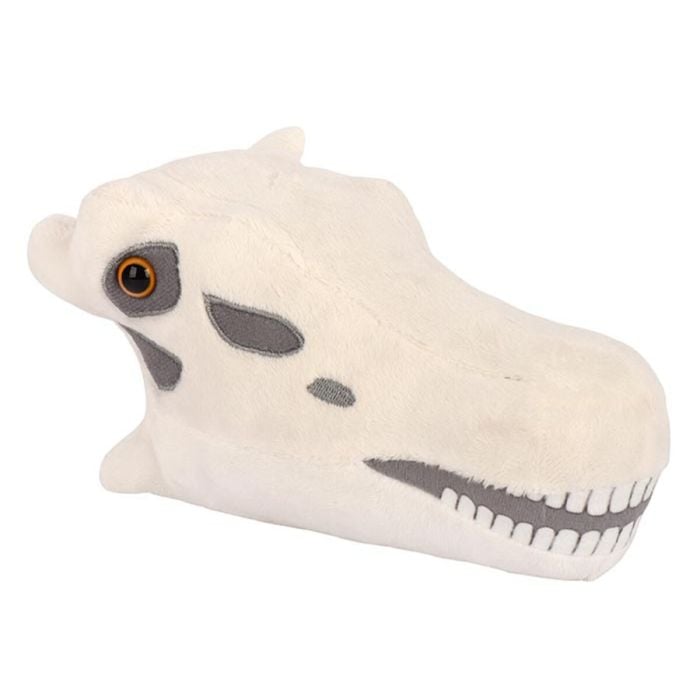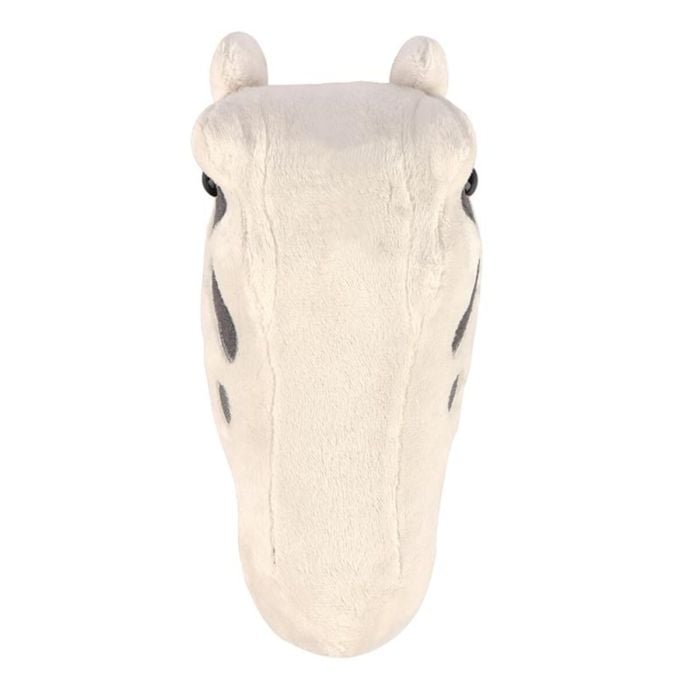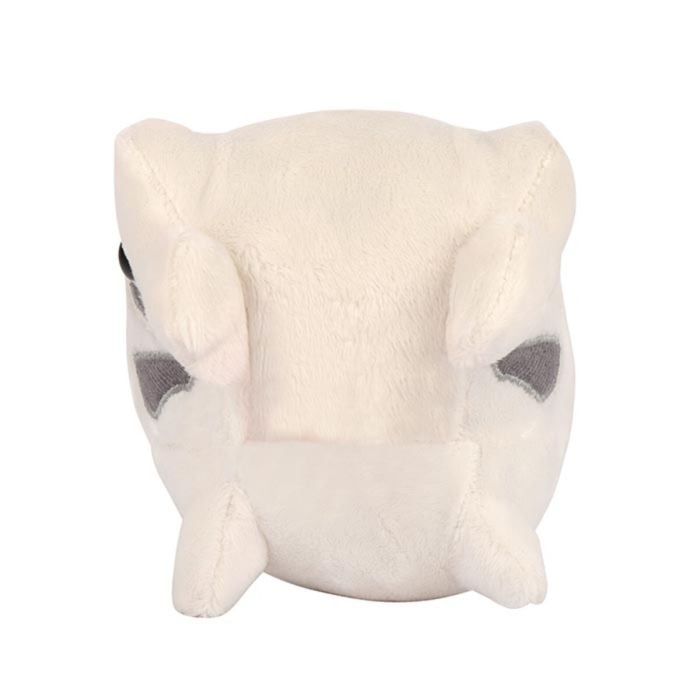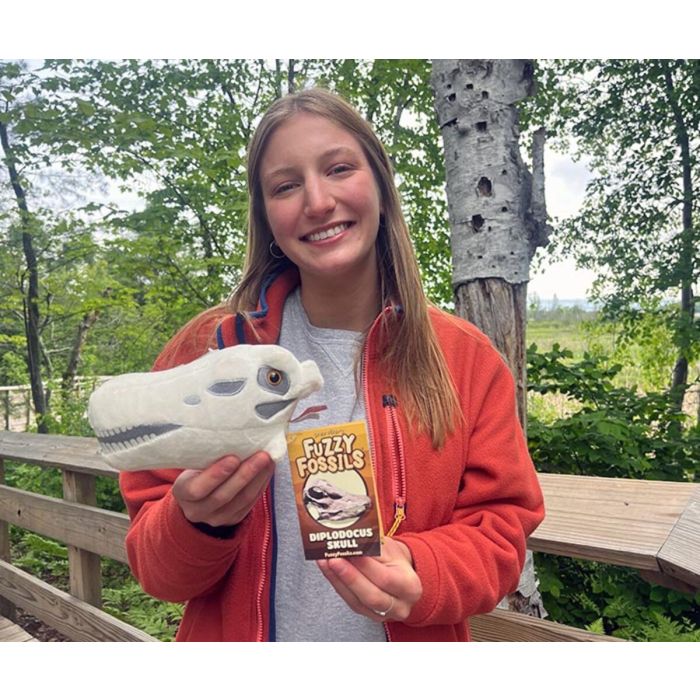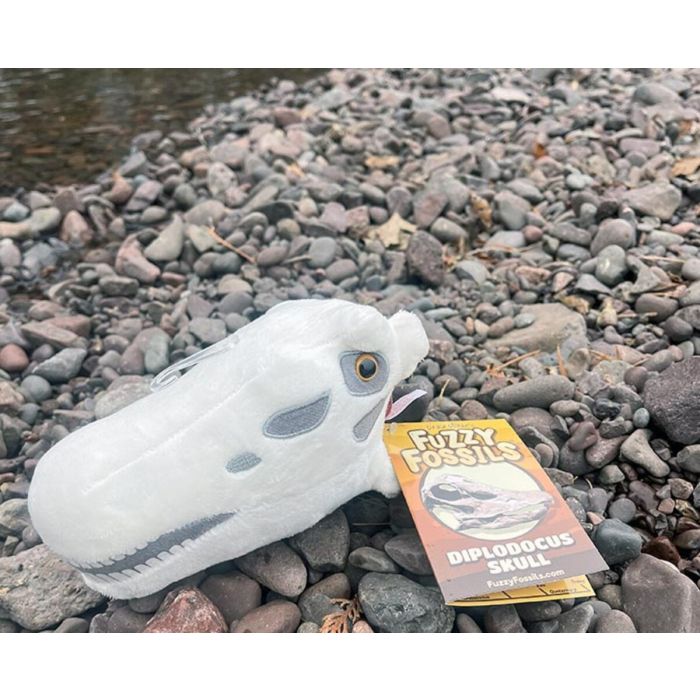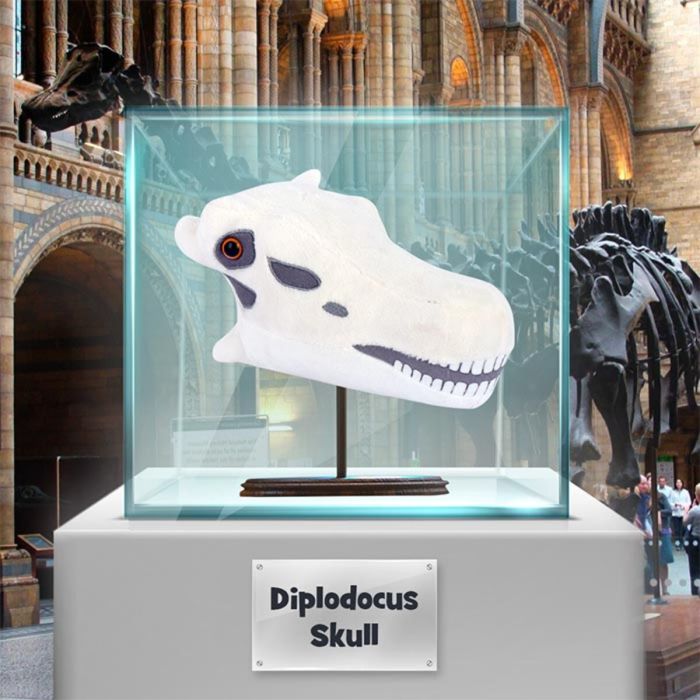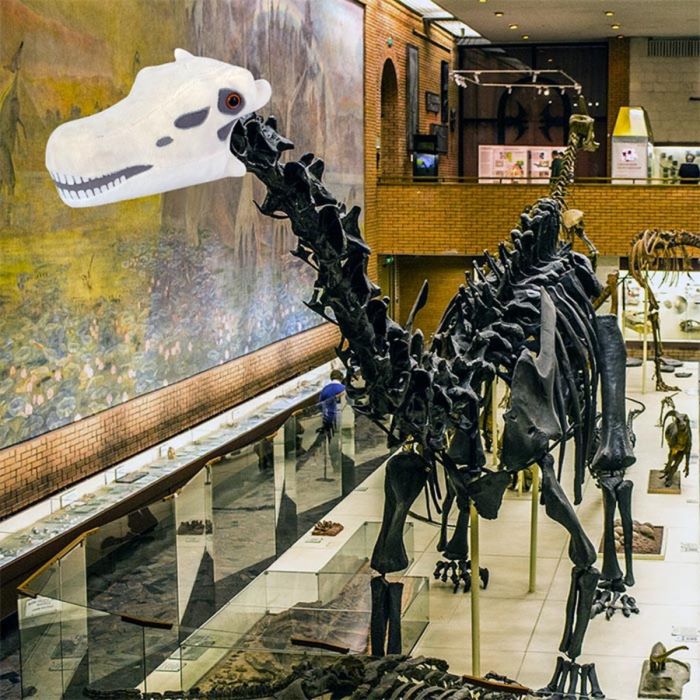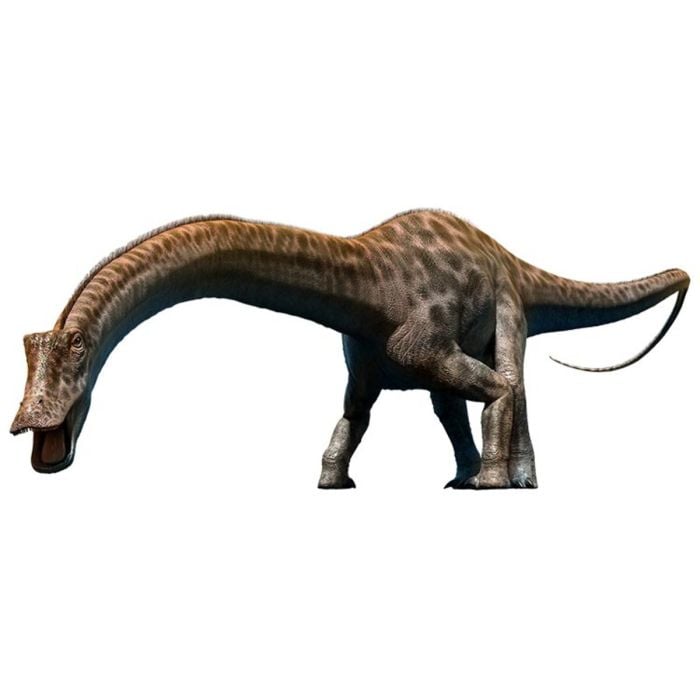Diplodocus Skull
Diplodocus inspires awe for its colossal size. At nearly 100 feet long and 15 tons, this iconic long-necked, long-tailed dinosaur was a sauropod, the largest group of dinosaurs ever to have walked the Earth. Diplodocus is one of the best-known of the 250 sauropod species discovered.
Size: 8 x 4 x 3"
Product Details
Additional Information
| Sizes | Giantmicrobes are based on actual microbes, cells, organisms and other critters, only 1,000,000 times actual size! Gigantic (GG) 16-24" XL (XL) 10-15" Original (PD) 5-8" Keychain (KC) 2-4" with clip |
|---|---|
| Materials | Plush from all new materials. Stuffed with polyester fiber fill. Surface washable: sponge with water & soap, air dry. |
| Packaging | Each plush microbe includes a printed card with fun, educational and fascinating facts about the actual microbe or cell. |
| Safety | Every product meets or exceeds U.S. and European standards for safety. For ages 3 and up. |
All about Diplodocus Skull

Diplodocus inspires awe for its colossal size. At nearly 100 feet long and 15 tons, this iconic long-necked, long-tailed dinosaur was a sauropod, the largest group of dinosaurs ever to have walked the Earth. Diplodocus is one of the best-known of the 250 sauropod species discovered. The famous specimen known as Dippy has replicas on display in museums around the world.
Diplodocus lived during the Jurassic period from 155 to 145 million years ago. The name diplodocus means “double beam” due to the chevron-shaped bones under the tail vertebrae. It had 15 massive neck vertebrae and a long whiplike tail with up to 80 vertebrae. Though its body was huge, diplodocus had a small rectangular skull with a broad squared-off mouth. Its simple peg-like teeth were incapable of chewing.
By analyzing fossilized teeth, paleontologists believe this plant-eater ate by gripping a branch between its teeth and pulling its head up and down to strip the leaves off the branch.
Studying diplodocus and other sauropods has proved very challenging because they have had a poor fossil record, much worse than other land animals. Burial is the first step in becoming a fossil. For diplodocus that requires a landslide, flash flood or other rare event that would deposit a lot of sediment at once to cover its huge body. And such violent affairs could scatter the dinosaur’s small skull and thin bones, making them hard to find. Diplodocus and other massive sauropods were incredible. They pushed the bounds of biology and grew bigger than any other land animals ever unearthed.














